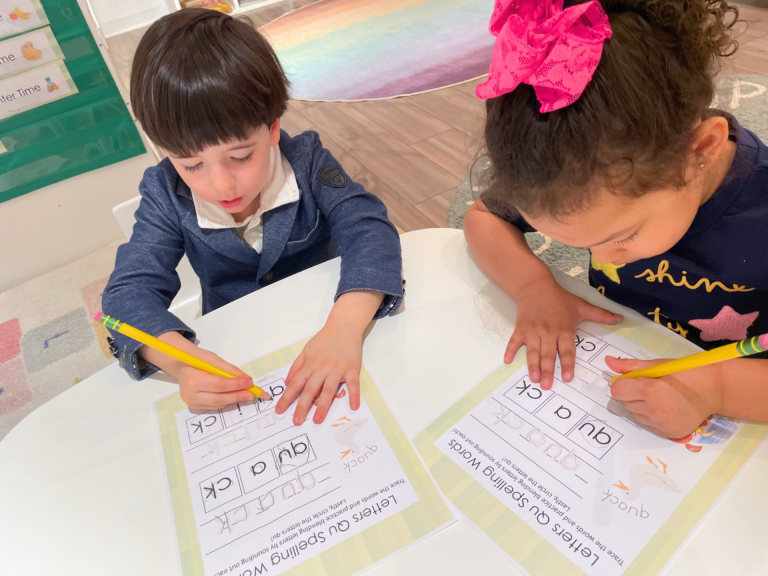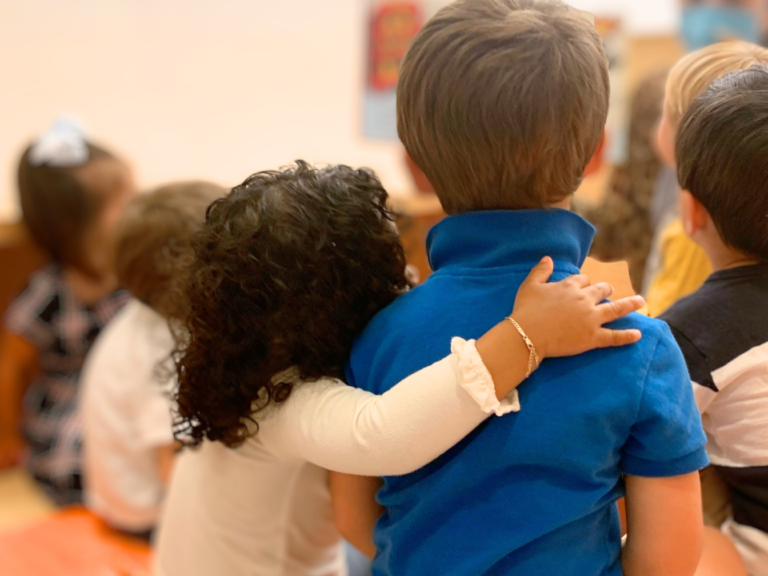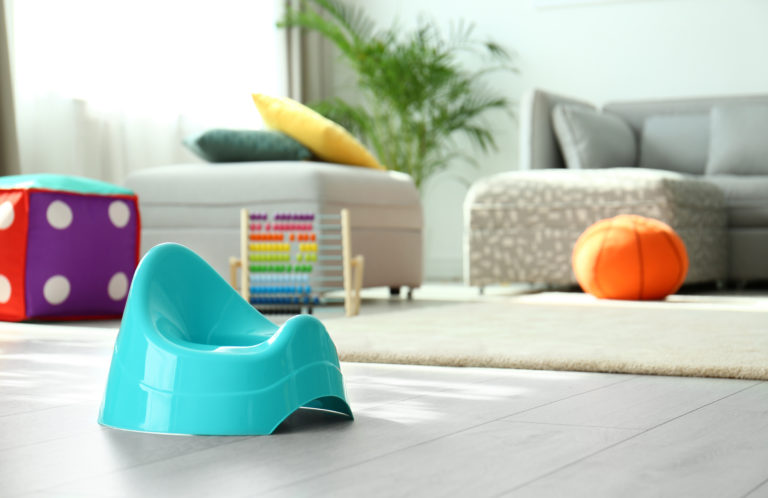10 Playful Math Activities for Preschoolers
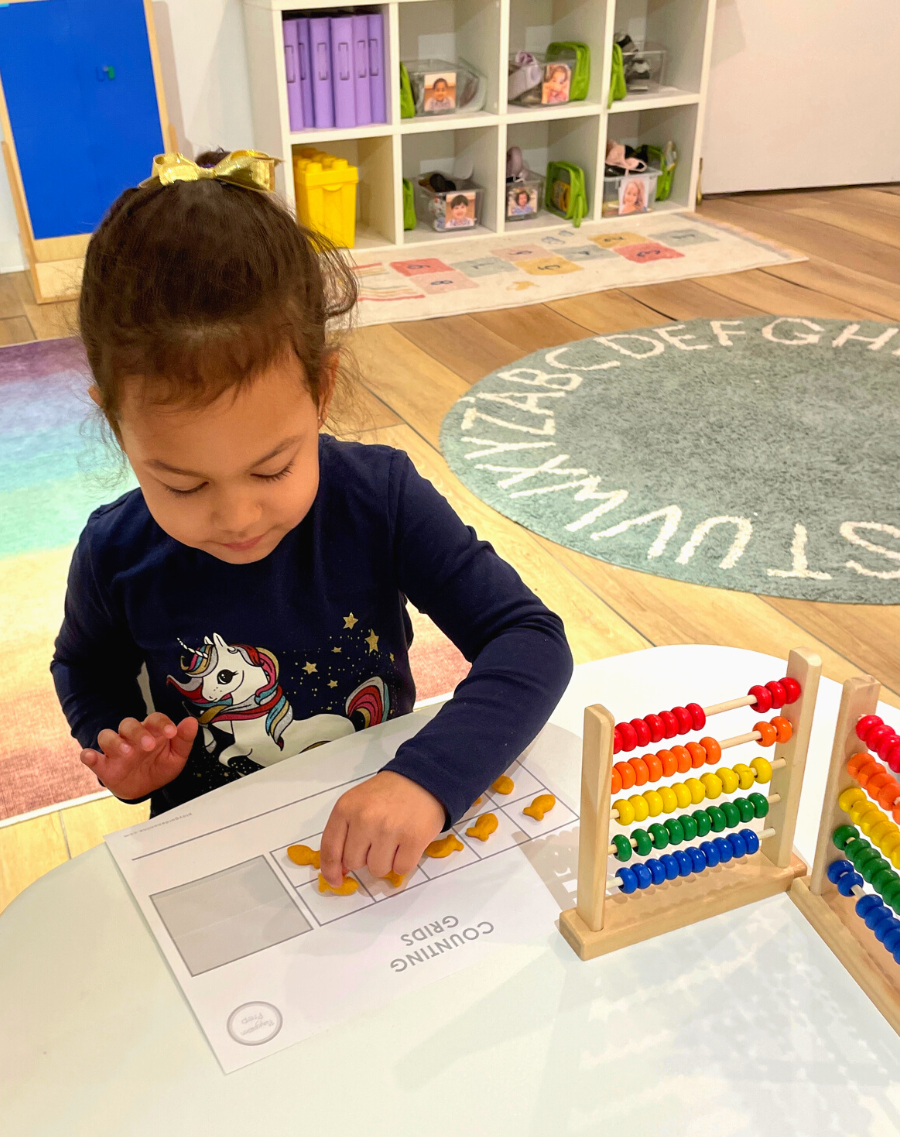
Make Math Magnetic!
Math is a great subject with so many benefits—studies have shown that practicing your math skills can improve memory, attention, and a variety of other cognitive skills. Because math is so tricky for many, it can be difficult to encourage a love or enjoyment of the subject in your little one, especially if they are struggling a bit with learning it during online preschool or in-person learning.
That being said, there are many ways you can be sure to practice with your little one while making sure they have a good time, too! Math games are a fantastic way of helping your little one develop a natural love for the subject instead of pushing them into it. Here are some wonderful ideas for math-centered preschool activities to try:
Number concept activities are a great start for little ones who are still having a tough time with developing an understanding of numbers. There are three main principles of numbers to work on with your little one: one-to-one correspondence, cardinality, and invariance. But wait, what do each of these things mean? Don’t worry—the words are fancy, but the concepts are a bit easier to understand than you might think. One-to-one correspondence basically means that when you count objects, each object is only counted once; cardinality means that the final number when counting object is the total amount of objects; finally, invariance simply reaffirms that it doesn’t matter what order you put objects in. The total number stays the same either way!
Sounds simple to us—after all, we’ve been counting for a while now! But how can you practice these concepts with your little one to reinforce all they’ve been learning during their virtual preschool or preschool in person? The answer is simple: there are so many ways to practice these skills in your daily life! We use math and counting so often that it becomes mundane, but there’s a number of easy ways to incorporate practice into day-to-day tasks.
One of the best is to count objects in daily contexts! Buttons, fruit from the grocery store, utensils to set the table–all of these things exist in certain amounts, so they’re perfect for counting practice. Be sure to start small, but as your little one gets a hang of it, the number of items can grow! Another way you can put these skills to practice is by placing items in a row. Order a number of small objects, like coins, and ask your little one to tell you how many there are. Once they’ve counted them, change the order or shape they’ve been put in, and ask them to try again. It may take a bit, but once they’ve answered without having to recount the items, they’ve gotten the concept of invariance! When one-to-one correspondence is the most challenging thing for them to master, you can try to find objects that go together! Lots of things exist in sets, like utensils, cups and saucers, and more. You can ask your little one to pair the items up together, and then request that they count as they go along. This will help reinforce the idea that with each pair, there is the same number! Finally, one of our favorites is to play games that involve counting! Candyland, Chutes and Ladders and so many more all involve rolling a die, and recognizing the amount of squares or spaces one must move corresponds with the number rolled. If your little one feels really ready for a challenge, add a second die!
Now that your little one has gotten the concepts from above, it’s time to try and work on something else! Another important math skill that has to be practiced is geometry and spacial relations, which are really important to daily life. There are lots of toys that can encourage this skill-building, such as building blocks. Fortunately, though, our worlds are also full of shapes! Whether it’s the squares of window panes, the shape of a computer screen that your little one does virtual preschool on, or circles in clocks, there are a lot of chances your little one has to learn more about shapes. Practice identifying these shapes together, and be sure to ask how your child knows each shape is…well, its shape! Another helpful tool for building a greater awareness of spacial relations is by using pictures in books as references. For instance, if you are reading Goodnight Moon, you can ask your little one to tell you where on the page they see the moon in relation to the other items on the page! Location identifiers like “above the bed”, “behind the tree”, or size indicators like “bigger than the clock” or “smaller than the girl” are all helpful ways to get your little one better acquainted with spacial relations. You can also make this extra applicable to your little one’s personal experience by making a map of your home together! Track the spaces your little one spends a lot of time in, and ask questions about where furniture is located, how far away from one another things are, where toys are kept and more!
Another applicable area of math studies comes in the form of measurements! Height, weight, quantity and size are all really useful and practical skills for your little one to learn as early on as possible, and there’s a bunch of fun ways to practice them with your child. One of the simplest (and most fun!) is baking or cooking together! Because baking is so fraction-based, it’s a smart and tasty introduction of fractions to your little one. Ask them to measure out quantities of flour, sugar or butter, and see how much they enjoy it. You can also ask your little one to practice their awareness of weight by playing supermarket guessing games! When picking out fruit or vegetables together, ask your little one which items are heavier than others, lighter than others, etc. It’s a nice way to involve them in a daily task and will certainly help build those fundamental skills. At home, a great way of introducing size relations is to compare your sizes with theirs! Holding your hands, arms, feet and other body parts up together to see whose is bigger or smaller is very handy–just make sure you have some form of measurement tool so that they can see how the numbers align with the way something looks.
Though learning fundamental math skills at online preschool or in-person may be tough for your little one at first, by practicing these fun and easy activities at home, you’re setting them up for success in their virtual preschool studies as well as for future math classes as they enter kindergarten! Try Our Online Preschool for FREE! Playgarden Prep offers numerous educational videos from real teachers, and numerous DIY projects that support early learning and development
Popular
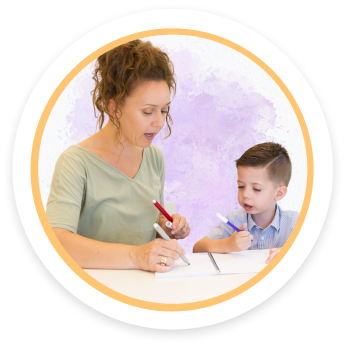

Hi, I'm Miss Charlotte!
Miss Charlotte is an Education Director by trade, and a mom by heart. All 200+ of our DIY projects were created by Miss Charlotte, with the help of her expert DIY assistant—Her 4 year old daughter! With a MST degree in Early Childhood Education and 15 years of teaching experience, her blogs and DIY projects have been an incredible resource for our Playgarden Prep schools. We hope that your family loves them as much as we do!

